In the dynamic world of baseball, pitchers continually innovate to gain an edge over batters. Among the arsenal of pitches at their disposal, three stand out: the curveball, slider, and sinker. Each pitch has its unique characteristics, serving different purposes on the mound. Understanding the nuances of Curveball vs Slider vs Sinker is crucial for both pitchers and fans alike. Let's delve into a comprehensive comparison to uncover the secrets behind these game-changing pitches.
Exploring the Curveball: Curveball vs Slider vs Sinker
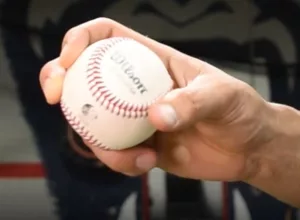 Diving into the intricacies of the Curveball, it's essential to understand its role as a breaking pitch renowned for its sharp downward movement. When pitchers deliver a Curveball, they deliberately apply topspin to the ball, initiating a pronounced drop just as it nears the plate. This deliberate manipulation creates a deceptive trajectory that can confound even the most seasoned batters, making it exceedingly difficult for them to make solid contact.
Diving into the intricacies of the Curveball, it's essential to understand its role as a breaking pitch renowned for its sharp downward movement. When pitchers deliver a Curveball, they deliberately apply topspin to the ball, initiating a pronounced drop just as it nears the plate. This deliberate manipulation creates a deceptive trajectory that can confound even the most seasoned batters, making it exceedingly difficult for them to make solid contact.
The key to executing a successful Curveball lies in the grip employed by the pitcher. Typically, pitchers position their index and middle fingers along the horseshoe seam of the baseball, with the thumb providing essential support underneath. This grip allows pitchers to exert precise control over the spin and trajectory of the ball, enabling them to consistently generate the desired downward movement.
As the Curveball hurtles towards the plate, its deceptive nature becomes increasingly apparent. Batters, anticipating a different trajectory, often find themselves swinging too early or misjudging the pitch entirely, resulting in missed opportunities for solid contact. It's this element of surprise and unpredictability that makes the Curveball such a potent weapon in a pitcher's arsenal, capable of turning the tide of a game in an instant.
Diving into the Slider: Curveball vs Slider vs Sinker
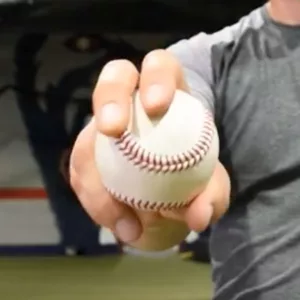 Delving deeper into the mechanics of the Slider, we encounter another formidable breaking pitch renowned for its lateral movement. Unlike the Curveball, which drops sharply, the Slider boasts a distinctive sideways trajectory that sets it apart on the mound. As the pitch hurtles towards home plate, it often mirrors the appearance of a fastball, only to veer sharply towards the batter's off-hand side at the last moment.
Delving deeper into the mechanics of the Slider, we encounter another formidable breaking pitch renowned for its lateral movement. Unlike the Curveball, which drops sharply, the Slider boasts a distinctive sideways trajectory that sets it apart on the mound. As the pitch hurtles towards home plate, it often mirrors the appearance of a fastball, only to veer sharply towards the batter's off-hand side at the last moment.
Pitchers achieve this unique movement by applying strategic pressure on one side of the ball while maintaining a firm grip throughout the delivery. This subtle manipulation alters the ball's trajectory, causing it to break away from the batter's anticipated path. The result is a pitch that can deceive even the most discerning hitters, inducing swings and misses or weak contact when executed with precision.
What makes the Slider particularly valuable to pitchers is its versatility. Whether used to elicit swings and misses or induce weak contact, this pitch offers a multifaceted approach to outmaneuvering opposing batters. Its ability to confound hitters with its unpredictable movement makes it a coveted weapon in any pitcher's repertoire, capable of turning the tide of a game with a single, well-placed delivery.
Understanding the Sinker: Curveball vs Slider vs Sinker
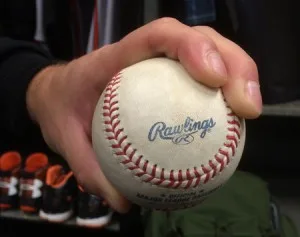 Delving into the intricacies of the Sinker, we encounter a fastball variant renowned for its distinctive downward movement. Unlike breaking pitches such as the Curveball and Slider, the Sinker relies on its ability to generate sink or drop as it approaches the plate. This unique characteristic sets it apart from other pitches, making it a valuable tool in a pitcher's arsenal.
Delving into the intricacies of the Sinker, we encounter a fastball variant renowned for its distinctive downward movement. Unlike breaking pitches such as the Curveball and Slider, the Sinker relies on its ability to generate sink or drop as it approaches the plate. This unique characteristic sets it apart from other pitches, making it a valuable tool in a pitcher's arsenal.
When pitchers deliver a Sinker, they employ a similar arm action to that of a fastball, maintaining consistency in their throwing motion. However, what distinguishes the Sinker is the subtle wrist pronation applied by the pitcher at the point of release. This slight adjustment alters the ball's trajectory, causing it to dip sharply as it nears the batter, making solid contact challenging.
The effectiveness of the Sinker lies in its ability to induce ground balls, a trait highly coveted by pitchers seeking to minimize extra-base hits or initiate double plays. When executed with precision, the Sinker forces batters to make contact with the lower portion of the ball, resulting in ground balls that are more likely to be fielded by infielders.
In summary, the Sinker offers pitchers a formidable weapon capable of generating ground balls and limiting the offensive capabilities of opposing hitters. Its ability to induce downward movement makes it a valuable asset in various game situations, from crucial moments with runners on base to strategic attempts to stifle offensive momentum.
Comparison Table: Curveball vs Slider vs Sinker
| Aspect | Curveball | Slider | Sinker |
|---|---|---|---|
| Movement | Sharp downward break | Lateral movement towards off-hand side | Downward sinking action |
| Grip | Index and middle fingers along seam | Similar to fastball grip | Standard fastball grip |
| Usage | To keep batters off balance | Induce swings and misses or weak contact | Generate ground balls |
| Speed | Slower than fastball | Slightly slower than fastball | Similar to fastball velocity |
| Difficulty to hit | Challenging due to late break | Difficult due to sudden lateral movement | Generates weak contact or ground balls |
Tips for Mastering Each Pitch
- Curveball: Focus on snapping the wrist sideways like a karate chop to maximize spin and drop.
- Slider: Experiment with grip pressure to control the amount of break.
- Sinker: Maintain a consistent release point to deceive batters with late movement.
Ready to Take Your Pitching to the Next Level?
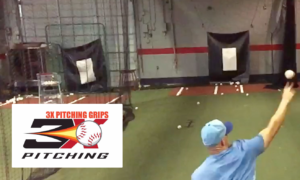 Are you ready to elevate your pitching game and dominate on the mound like never before? To learn the secrets of some of baseball's most potent pitches, look no further than the 3X Pitching Grips program, which MLB pitcher David Aardsma created.
Are you ready to elevate your pitching game and dominate on the mound like never before? To learn the secrets of some of baseball's most potent pitches, look no further than the 3X Pitching Grips program, which MLB pitcher David Aardsma created.
What You'll Get:
Pitches Included:
- 4 Seam Fastball
- 2 Seam Fastball
- Cutter
- BP Fastball
- Circle Change
- Fosh Change
- Straight Change
- Split Finger
- Slider
- Curve
- Slurve
- Knuckle Curve
Analysis Included:
- Detailed instructions on how to grip each pitch
- Variations of the grips for maximum effectiveness
- Guidance on finger pressure placement for optimal control
- Insight into the desired movement and spin of each pitch
- Techniques for delivering each pitch with maximum velocity
- Comprehensive breakdown of the ideal spin of the ball
- Tips on when to strategically deploy each pitch during a game
- Suggestions for pitches that complement each other well
- Insights into the preferred arm slot for each pitch
- Aiming strategies to hit your spots with precision
- Identification of common mistakes and how to correct them effectively
Take Action Now!
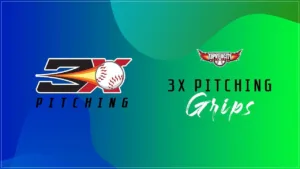 Don't miss out on this exclusive opportunity to learn from the expertise of MLB Pitcher David Aardsma and take your pitching skills to new heights. Sign up for the 3X Pitching Grips program today and start dominating on the mound like never before!
Don't miss out on this exclusive opportunity to learn from the expertise of MLB Pitcher David Aardsma and take your pitching skills to new heights. Sign up for the 3X Pitching Grips program today and start dominating on the mound like never before!
Sign up here for the 3X Pitching Grips program
Unlock the secrets to mastering these essential pitches and gain a competitive edge on the field. Don't let this opportunity pass you by – join the program now and unleash your full pitching potential!
For more pitch analytics visit this page!
FAQs (Frequently Asked Questions)
- How do pitchers grip a curveball? Pitchers grip a curveball by placing their index and middle fingers along the horseshoe seam of the baseball, with the thumb underneath for support.
- What makes a slider different from a curveball? Unlike a curveball, which breaks sharply downward, a slider moves laterally towards the batter's off-hand side.
- Can a sinker be thrown with high velocity? Yes, sinkers can be thrown with considerable velocity, often resembling a fastball in speed.
- Are sinkers effective against power hitters? Sinkers are effective against power hitters as they induce ground balls, limiting the potential for extra-base hits.
- How do pitchers develop command of these pitches? Pitchers develop command through consistent practice, focusing on grip, release point, and arm action.
- Can batters anticipate these pitches? While experienced batters may anticipate certain pitches based on pitcher tendencies, the element of deception remains crucial in pitching success.
Conclusion
In the intricate dance between pitcher and batter, Curveball vs Slider vs Sinker pitches add depth and strategy to the game of baseball. Each pitch offers its unique challenges and rewards, requiring mastery of technique and strategy. By understanding the nuances of these pitches, players and fans alike can appreciate the artistry and skill involved in America's favorite pastime.



